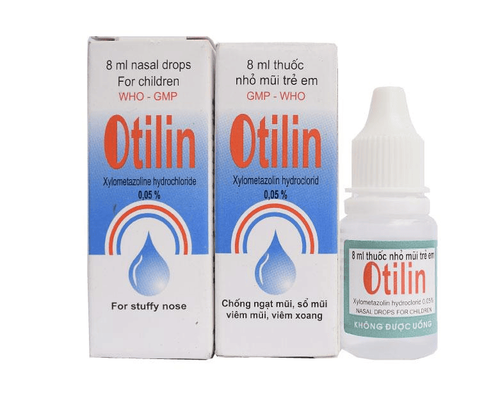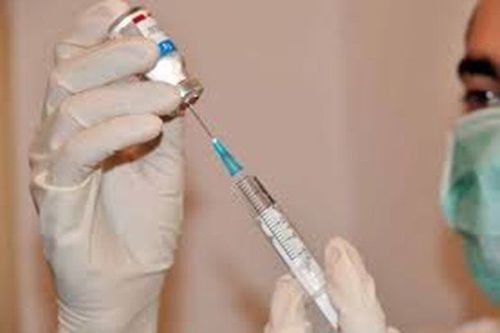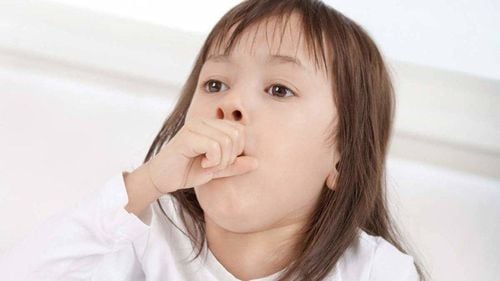This is an automatically translated article.
This article is professionally consulted by Resident Doctor, Doctor Nguyen Hung Tien - Resident Doctor of Pediatrics - Neonatology - Department of Pediatrics - Neonatology - Vinmec Hai Phong International General Hospital.The most common cause of wheezing in children is determined to be due to asthma. However, children wheezing can also be caused by other causes such as lung diseases, foreign bodies in the airways, ...
1. What is wheezing in children?
Wheezing is the continuous sound of a baby's breathing when a strong flow of air passes through the narrowed airway and hits the wall of the airway.Children wheeze makes sounds that are high-pitched but can also be low-pitched, monophonic or polyphonic and occur on both inhalation and exhalation. In which, monophonic wheeze is caused by obstruction of the large airways, and polyphonic wheeze is caused by obstruction of the small airways.
2. Causes of wheezing in children
2.1 Causes of wheezing according to the obstruction mechanism Inner airway narrowing: Most children wheeze due to asthma, but it can also be caused by inflamed bronchioles, gastroesophageal reflux disease, esophageal mucosa. edema, impaired swallowing function; poisoning , anaphylaxis causing bronchospasm; There are abnormalities in the structure of the internal airways such as narrowing of the bronchi, bronchopulmonary dysplasia, soft cartilage of the tracheobronchial tubes, ... Obstruction in the airway lumen: The main cause of wheezing in children is because the child swallows a foreign substance. animals or children with tumors in the tracheobronchial lumen. Extrinsic compression of the airways: Causes of external compression of the airways such as lung cysts, aneurysms, malignancies, neuroblastoma, neuroblastoma, thymoma, tumor Lymphoma , children with respiratory diseases such as tuberculosis or diphtheria . Other causes: Children wheeze due to congestive heart failure, weakened immune system, motionless hair syndrome, cystic fibrosis. 2.2 Causes of wheezing by age Infants and infants under 12 months of age: Common causes are bronchiolitis, infants with asthma, chronic obstructive pulmonary syndrome (COPD). Less common cause is gastroesophageal reflux disease, children swallow foreign objects. Wheezing is rare in children with congenital airway defects, or congenital heart disease. Children 12 months of age and older: The main cause is also because children with asthma or pneumonia have chronic obstructive pulmonary syndrome (COPD). Less common cases are when the child swallows a foreign object. Very rarely, children with wheezing caused by tuberculosis of the lymph nodes or tumors of the mediastinum.3. Classification of children wheezing
3.1 Child wheezing acute or chronic? Acute Wheezing: Acute wheezing includes bronchial asthma, bronchiolitis, bronchiolitis, airway foreign body, esophageal foreign body. Chronic, recurrent wheezing: Children with chronic wheezing related to structural abnormalities of the airways such as tumors, lymph nodes, and narrowing of the trachea; Abnormal airway function such as bronchial asthma, interstitial lung disease, cystic fibrosis, weakened immune system, foreign body ingestion. 3.2 Does the child wheeze due to viral asthma or allergic asthma? Viral asthma: Children infected with a virus that trigger asthma attacks, have no symptoms between two asthma attacks, have no family history, and have had asthma themselves. Allergic asthma: Children with a history of allergies, between two exacerbations have prolonged symptoms, increased IgE blood tests.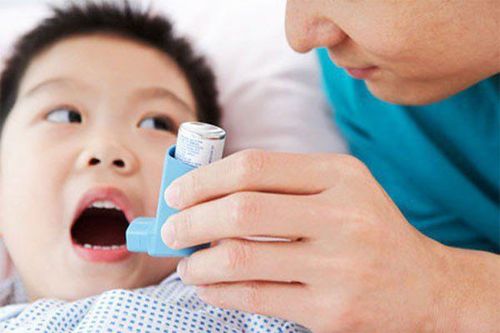
Hen suyễn là một trong những nguyên nhân gây khò khè ở trẻ
4. Diagnosing a child with wheezing
Diagnosis of wheezing children is mainly based on a thorough clinical examination to be able to describe whether the child's breathing sounds are wheezing or not, avoiding confusion with snoring, breathing due to stuffy nose, breathing sound. hissing, stagnant sound due to phlegm.Diagnosis of wheezing in children includes the following examinations: general physical assessment (weight, height, vital signs, SpO2, cyanosis of extremities, drumstick fingers), chest examination (look, feel, percuss), lung exam (auscultation), heart exam (look for murmurs and signs of heart failure), skin exam (look for eczema if the child has allergies) nasopharyngeal exam (look for signs of allergic rhinitis) , sinusitis or nasal polyps) and conduct tests (blood, sputum, imaging).
4.1 Examination of the chest for a wheezing child Chest examination and observation to check for the following characteristics are present in a child with wheezing:
Does the child have difficulty breathing, rapid breathing, chest indrawing or any other abnormalities structural face. Does the infant's thoracic diameter increase with chronic air retention? Obstruction of the airways causes the chest to concave and the thoracic pressure to increase. Children have scoliosis caused by complications of airway compression. After carefully observing the child wheezing, perform palpation of the lymph nodes to determine whether the lymph nodes are superior or deviated from the trachea. Next, percussion the chest to check where the diaphragm is located and if there is a difference in the echoes between the lung areas.
4.2 Check the child for wheezing Pulmonary examination Auscultate auscultation to determine whether the child's wheezing is diffuse or local (localization suggests abnormal airway structure), occurs during inspiration or Exhalation or both, how the airflow changes in different lung regions.
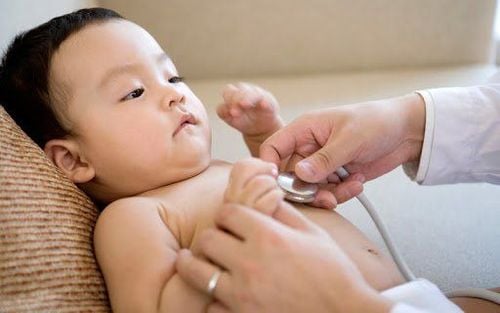
Để chẩn đoán nguyên nhân trẻ khò khè, bác sĩ có thể nghe phổi đối xứng
In particular, when examining the lungs of children with wheezing, it is necessary to determine the characteristics of crackles such as:
If the wheezing sound is accompanied by crackles, it may suggest a diagnosis of cystic fibrosis bronchiectasis, immunosuppression. . If a crackling sound is heard on inhalation in an asthmatic child, it means that the airways are closed on entry or secretions in the airways are interfering with the passage of air. If crackles are heard at the end of inspiration, it suggests interstitial lung disease, early congestive heart failure may be present. However, it should be noted that the presence of crackles does not exclude asthma. Children with asthma will respond to bronchodilators and reduce wheezing; however, other comorbidities should not be ruled out if clinical suspicion is present.
4.3 Diagnostic Tests for Child Wheezing 4.3.1 Imaging If the diagnosis at the clinical stage is unclear, a chest x-ray is indicated, especially on the first time the child wheezes with wheezing. severity, or in the case of recurrent wheezing. X-ray results suggest the following diagnoses:
Diffuse stasis: respiratory diseases such as asthma, cystic fibrosis, aspiration, motionless hair syndrome, aspiration. Focal pneumothorax: structural abnormalities of the airway or presence of a foreign body. Lung damage: Detecting atelectasis, lung parenchyma, bronchiectasis. Other features: Enlarged heart, pulmonary edema, enlarged pulmonary vessels, enlarged lymph nodes, mediastinal tumor.
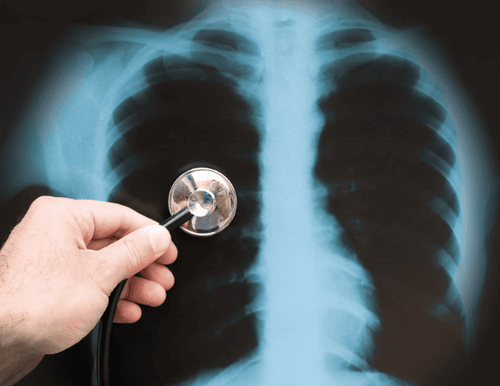
Nếu các dấu hiệu ở bước chẩn đoán lâm sàng không rõ ràng, bác sĩ sẽ chỉ định thực hiện chụp X-quang
4.3.2 Pulmonary function measurement and response testing Pulmonary function test is performed with older children wheezing because the child can cooperate well, helping to determine the presence, extent and location airway obstruction, as well as the child's response to bronchodilators. For younger children who are less cooperative, oscillometric methods can be performed.
Checking response to treatment helps to exclude children with asthma:
Nebulized bronchodilators are indicated for children with diffuse wheezing to diagnose asthma if there is a response. However, if the child has only a partial response or no response, asthma cannot be ruled out. If the child has chronic wheezing and asthma is suspected, continue using corticosteroids and inhaled bronchodilators for a minimum of 2 weeks. If symptoms improve, an asthma diagnosis can be made. In case the child does not respond completely to the drug or responds well but is suspected of having other comorbidities, additional tests are indicated. 4.3.3 Laboratory tests and endoscopy Most tests are not useful in the initial assessment of a child with wheezing, mainly based on the child's history and physical examination. Testing is indicated to confirm the diagnosis, or to rule out other causes. Tests to rule out include:
Blood smear: Assess for anemia, increased or decreased white blood cell count. An Eosinophil test suggests an allergy or parasitic infection. Blood tests: Diagnose children with RSV, mycoplasma virus that causes wheezing and can cause asthma in children. Sputum culture: Suspected bacterial infection such as tuberculosis, fungus Chlorine test in sweat: Diagnosis of cystic fibrosis, indicated when the child has diarrhea, growth retardation, clubbing, the child has symptoms in persistent, recurrent, and unresponsive to asthma treatment, especially in cases of wheezing accompanied by a chronic productive cough. Antibody test: Check if the immune system is weakened, IgE increased to identify allergic status. Endoscopy is indicated in children with airway foreign bodies, persistent wheezing and incomplete response to bronchodilator therapy. Nasopharyngoscopy is a minimally invasive technique that allows visualization of both the vocal cords and the larynx. Indication of bronchoscopy with bronchoalveolar lavage is suspected when the child has infection, aspiration or interstitial lung disease.
Diagnosis of wheezing children is mainly based on a thorough clinical examination of the chest - lungs. If the clinical diagnosis is not clear, the doctor will perform other imaging tests, do laboratory tests or endoscopy to identify and rule out causes.
Vinmec International General Hospital with a system of modern facilities, medical equipment and a team of experts and pediatricians with many years of experience in clinical diagnosis, parents can rest assured. when visiting and treating wheezing children at the Hospital.
In addition, parents should also add some supporting foods containing lysine ingredients, essential micro-minerals and vitamins such as zinc, chromium, selenium, B vitamins, ... to help fully meet The need for nutrients at the same time supports the immune system, enhances resistance, reduces the risk of upper respiratory tract infections, bronchitis, flu.
Lysine is very necessary for the development of children, Lysine promotes the production of digestive enzymes to stimulate children to eat better and digest easily and effectively, increase food metabolism, maximize absorption of nutrients. Nutrition from food.Strengthening lysine for babies helps the body create antibodies, develop resistance to help reduce cough, thin phlegm in children.
Parents can learn more:
Why do you need to supplement Lysine for your baby?
Please regularly visit Vinmec.com website and update useful information to take care of your baby and family.




